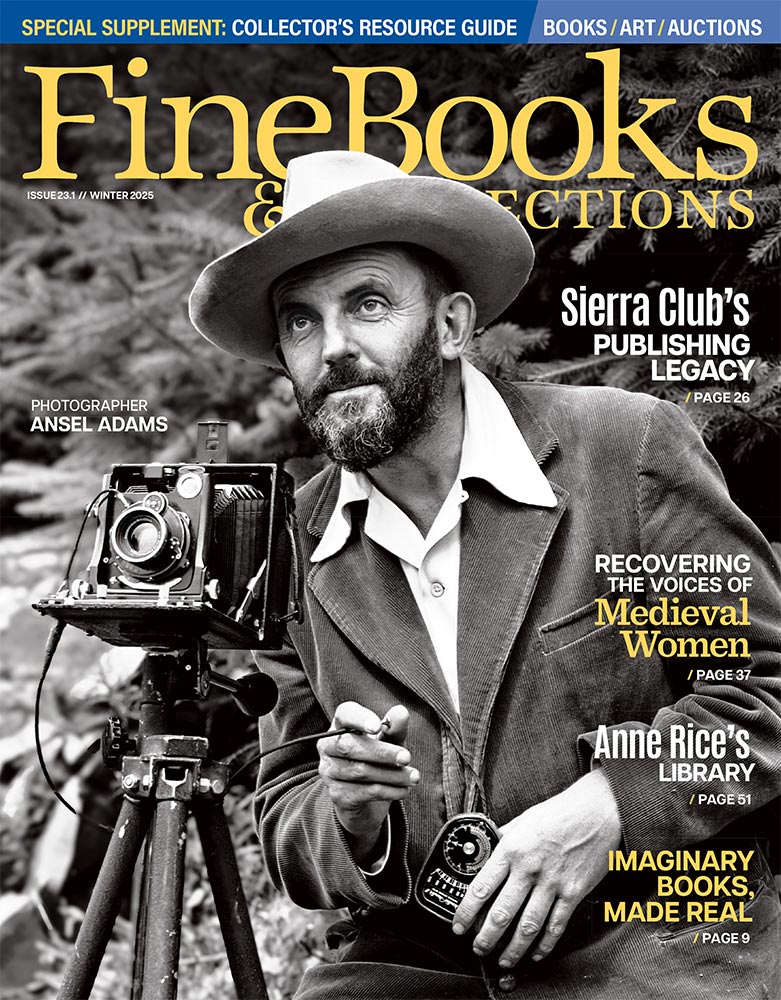Bright Young Librarians: Sarah Burke Cahalan
Our Bright Young Librarians series continues today with Sarah Burke Cahalan, Special Projects and Reference Librarian at Dumbarton Oaks in Washington DC.
How did you get started in rare books?
My first library job was an apprenticeship in the Weissman Preservation Center when I was an undergraduate at Harvard. I cleaned awful adhesives off of colonial currency--yes, I was a money launderer--and I made clamshell boxes for daguerreotypes. At the same time, I worked in an independent bookstore, which is where I started to learn about reference services. After college (thanks to a grant), I had a vagabond year in which I read poetry and rode trains in Europe and Asia. I spent time with beekeepers in Malta, Tunisia, Italy, and Slovenia. The amazing thing is that my interest in apiculture is relevant to my current work with rare garden books, which often have coverage of beekeeping and other types of animal husbandry. My MA in medieval art focused on the making of art objects; it was supervised by a codicologist at the Courtauld Institute, where I also worked part-time in the archives. By the time I arrived at Simmons for my MLIS I knew to search out people who could teach me about special collections and rare books librarianship. I finished the degree in 2010--not an amazing time for library jobs! So I was very happy to find my way to Dumbarton Oaks.
Please introduce us to Dumbarton Oaks and your role there:
Dumbarton Oaks is a Washington, DC-based research institute of Harvard University. We support research in Byzantine, Garden & Landscape, and Pre-Columbian Studies. Dumbarton Oaks offers fellowships throughout the year as well as short-term research stipends and internships. We also have several hundred authorized Readers who routinely visit the Library. The institute includes Gardens, a Museum, Archival Collections, and a Publications department. I divide my time between the Research Library and the Rare Book Collection. The Rare Book Collection supports scholarship in all three subject areas, but it is strongest in Garden & Landscape because of the collecting interests of Mildred Barnes Bliss, one of the founders of Dumbarton Oaks.
My title, Special Projects & Reference Librarian, encompasses the range of my duties. I do day-to-day reference work and answer complex questions about rare book holdings. I try to maintain a social media presence for the Rare Book Collection. I supervise the Rare Book Reading Room four afternoons a week and handle many of the image orders we receive there. I developed our online exhibit template and the content type for describing rare books (using a MARC-Dublin Core crosswalk). I hosted a "miracle fruit" party a couple of years back. I co-organized a symposium in October 2013 titled "The Botany of Empire in the Long Eighteenth Century," and am currently working on the symposium volume with my co-editors. I've supervised two interns and look forward to working with more interns in the future. One of the really fun parts of my job is working with the Museum's gift shop to develop products that use images from the collection. "Special projects" can mean any number of things!
Favorite rare book / ephemera that you've handled?
I get really excited about manuscript copies of printed works. The amount of labor that goes into this sort of project is astounding. One example I've returned to several times is a late eighteenth-century manuscript copy of Paolo Boccone's 1697 Museo di piante rare, with added Linnaean names and morphological details. Items that complicate my ideas of what is unique and what is a reproduction always catch my interest. For example, Dumbarton Oaks holds several albums prepared by workshops of artists in Penang, Malacca, and Singapore for Europeans stationed abroad; the illustrations in these albums were copied and assembled for purchase, meaning that similar paintings are extant in multiple horticultural libraries today.
What do you personally collect?
I prefer to keep my responsibility for cultural heritage materials at work, where there's proper HVAC, emergency preparation, etc. If I acquire anything these days it is all of the kids' books I loved when I was growing up. But they quickly get applesauce on them. My house is not a safe place for books and it won't be for at least a decade, when my children are less inclined to chew on things that should not be chewed upon. I do have a beautiful wooden card catalog which is mostly used for seed packets, shells, and other little objects.
What excites you about rare book librarianship?
I love that almost everything I have ever found interesting is relevant to my job. I worked part-time at the Harvard Botany Libraries while I was attending Simmons. I remember the day I realized how important my knowledge of Latin was going to be in helping a scholar who was researching the earliest documentation of specific plants. It was thrilling! I had been developing obscure skill sets and interests for years, and here was a profession in which they could actually be useful. Even my guilty pleasures--I have subscribed to Vogue for years, and I love British publications like Tatler--end up being useful when I know the name of a particular country estate or a particular detail about the history of costume. On a good day, I get to share discoveries from the collection with people in our community and beyond. Rare book librarianship is really the best job in the world.
Thoughts on the future of special collections / rare book librarianship?
I am interested in the combination of our assets with other datasets. No matter one's opinion on MOOCs, our digital facsimiles can gain new traction and new audiences as learning moves online. Interoperability of digital collections (such as that facilitated by IIIF and linked open data) will make it possible to compare disparate collections in the same platform. The potential uses of GIS for understanding intellectual history are extraordinary. Of course these big projects require collaboration across departments and institutions, not to mention time and money.
The boundaries among rare book librarianship, visual resources, and the sciences are blurring. So many of the questions I handle are along the lines of "Can you help me find an image of _____?"--whether it's an archaeological site or a period map or a particular plant. There are fantastic print resources and databases for some of these queries (natural history in particular), but others are lacking. Much of it comes down to knowing the collections and knowing the personality of specific library catalogs. But it's also important to keep up with developing tools and metadata standards in fields other than our own. I just learned about Audubon Core, a descriptive metadata standard for biodiversity resources, and I've been working with natural history materials for years.
Any unusual or interesting collection at your library you'd like to draw our attention to?
Yes!--in collaboration with Jason W. Dean at the University of Arkansas I am working on S. Fred Prince, an illustrator of natural history who worked primarily in the Ozarks in the late nineteenth and early twentieth centuries. Much of his work is based on specimens he collected and observed in the field. He produced work on ferns, wildflowers, caves, and butterflies. The manuscript materials are now held in a number of collections around the United States. Some are at Dumbarton Oaks, including a manuscript on ferns that also includes maps and pressed specimens. We hope to gain more exposure for his work. We've just started putting materials on Tumblr and I'm sure I'll be Tweeting developments @stampedinblind.
Any upcoming exhibitions at your library?
We have two exhibit spaces and four of us share curatorial responsibilities, so we always have new exhibits going up. Since some of the exhibit space isn't routinely accessible to the general public, we've been trying to curate at least one online exhibit a year. My colleague and I are planning an exhibit on Hagia Sophia for next winter. Several departments at Dumbarton Oaks (notably the Image Collections and Fieldwork Archives) have important documents and objects relating to this site, many of which have been or are in the process of being digitized, so in addition to an on-site exhibit we are developing an online portal as a reference tool. This is the sort of project that will be of use to a broad spectrum of visitors, since Hagia Sophia is the best-known work of Byzantine architecture.










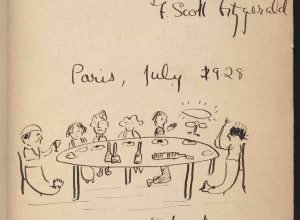
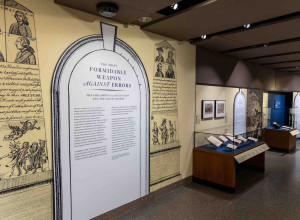
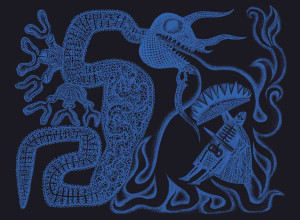
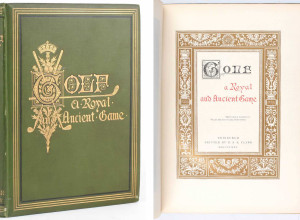
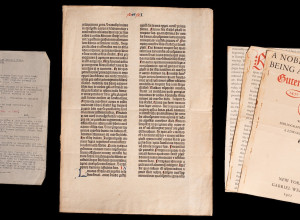

![Lucas Janszoon Waghenaer, Thresoor Der Zeevaert… Amsterdam, Cornelius Claesz., [?1602]. Offered at £80,000.](https://cdn.finebooksmagazine.com/sites/default/files/styles/category_card/public/media-images/2025-03/lucas-janszoon-waghenaer-thresoor-der-zeevaert-title-page-1602-courtesy-daniel-crouch-rare-books.jpg?itok=Qi_jFn7y)
